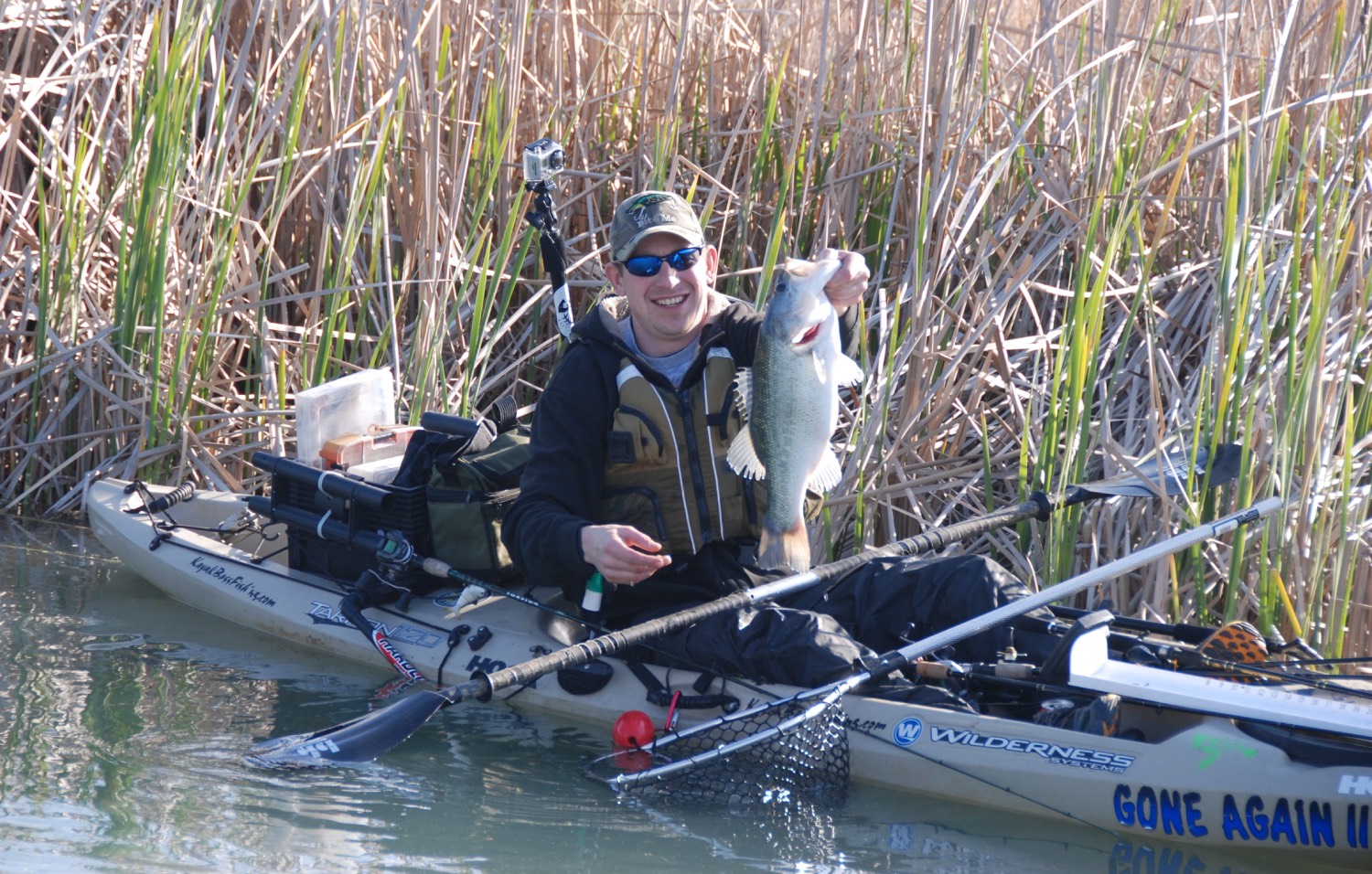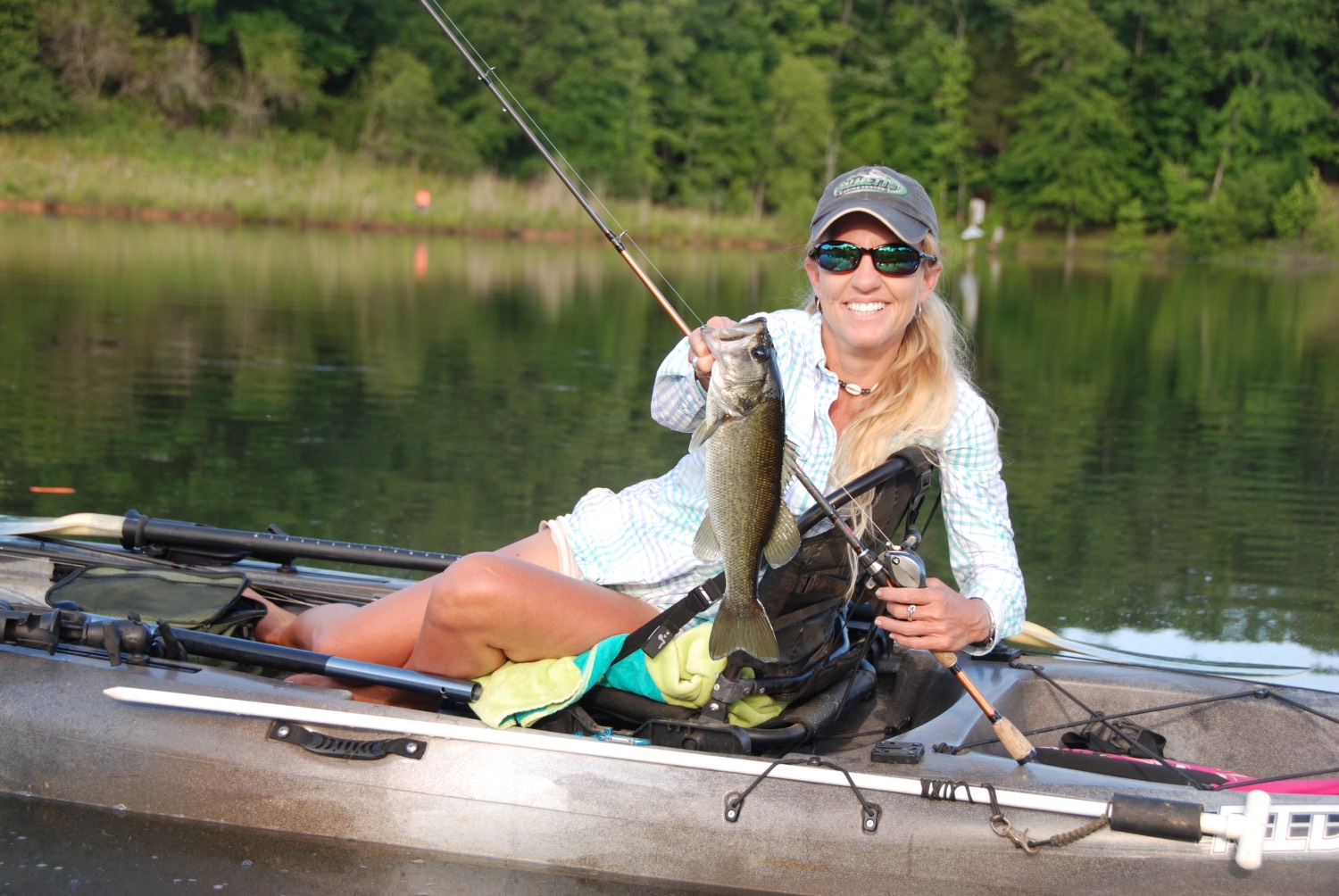Phillip Gentry
On the surface, fishing for black bass from a kayak is really no different than fishing for any other species from a plastic boat. When it comes to kayak bass fishing, however, several key parameters come into play that aren’t a concern when fishing for other species. Typically, those parameters revolve around tournament fishing.
Tournament bass fishing from a kayak is much different than chunkin’ and windin’ from a 5,000 pound sparkly-hulled bass boat powered by a 200 HP outboard. The differences boil down to one thing – focus. Kayak anglers cannot afford to be afflicted with the Attention Deficit that is so common among the power boating bass set. Kayak bass anglers don’t have the range to limit themselves to one or two casts in one spot, and then haul off across the lake.
Normal range from a kayak is in the neighborhood of 2 – 3 squares. Because of this, a kayak angler will focus more on one given area, trying three or four different approaches, baits, and presentations to elicit a bite.
Along with range is a limited amount of storage space. Anglers must decide what type of presentation they want to use, what types of baits they’ll need to do it, and how many rods they can afford to pull it off within the confines of what they can carry in a kayak.
One advantage that paddling anglers do have over power boats is the areas where access can be gained in order to target less-pressured fish. Kayaking bass anglers can launch a boat in a backwater area that would never accommodate a power boat, and can do it at a much more subtle pace and approach. When they can get shallow water areas to themselves, kayak anglers have a much better chance of slipping up on unsuspecting fish or figuring out what it’s going to take to get that dominant resident bass to dance.

This angler is able to sneak into shallower, weedier places with his kayak.
Another vastly different aspect to kayak bass fishing is boat positioning. Wind, wave or even movement in the boat is only going to give the paddler one or two shots at a target before they have to lay down the rod, pick up the paddle and work the boat back into position for the next cast. Because of this chance of opportunity, kayakers have learned to make each cast count. That requires advance planning during the approach to the target. Is this target worth anchoring or staking out? Where can I reach multiple targets? Should I try this from a different approach?
With regard to having the latest electronics on hand, new sealed lead acid batteries and lightweight lithium battery packs that only weigh a couple of pounds pack enough juice to run the latest state of the art fishing sonar units all day long. Every iteration of advanced sonar platform that can be installed on a bass boat is also showing up on plastic paddle boats.
Kayak bass anglers have also learned the art of fishing in the sonar cone from their power boating brethren. Searching deep water topography with sonar, locating fish and structure, setting up overhead, and watching the bait on the screen as it works it’s magic in front of the fish’s face, just like watching a video game, is not lost on kayaking anglers.
Read More: Kayak Fishing Gear Essentials
Even kayak bass fishing tournaments are a much different affair than what the standard tournament angler may be accustomed to. Due to the storage, weight, and transporting restrictions inherent to kayak fishing, it is much too cumbersome to catch, retain, and transport a fish in a kayak long enough to get one, much less several, to a weigh-in site for scoring. The “weigh-in” is actually a photo contest. To keep everyone honest, tournaments use an identifier, which could be a playing card, a logo, or even a wooden poker chip. If the tournament is a one-day event, the identifiers, which are specific to each tournament, are handed out before the tournament and must be included in the photograph the angler takes of his catch.

Most rule formats state that the photo entry must include the entire length of the fish laying on a rigid ruler, mouth closed, with the identifier in the photo. The photo must also clearly show the length of the fish and be high enough resolution so that the judges can zoom in to get measurements on a ¼ inch scale.
Even the durations of kayak bass fishing tournaments are different, with some tournaments conducted on site while others are entirely online. These online events may last a day, several days or even be monthly or yearly accumulations of bass fishing catches.
Despite the differences, let’s not forget the reason most anglers fish. It’s fun. You might get excited landing an 8 pound largemouth in a bass boat. You’ll never forget the day you did it from a kayak, because you were never sure, not until you hoisted the fish up into your lap, that you were going to actually going to pull it off.




























